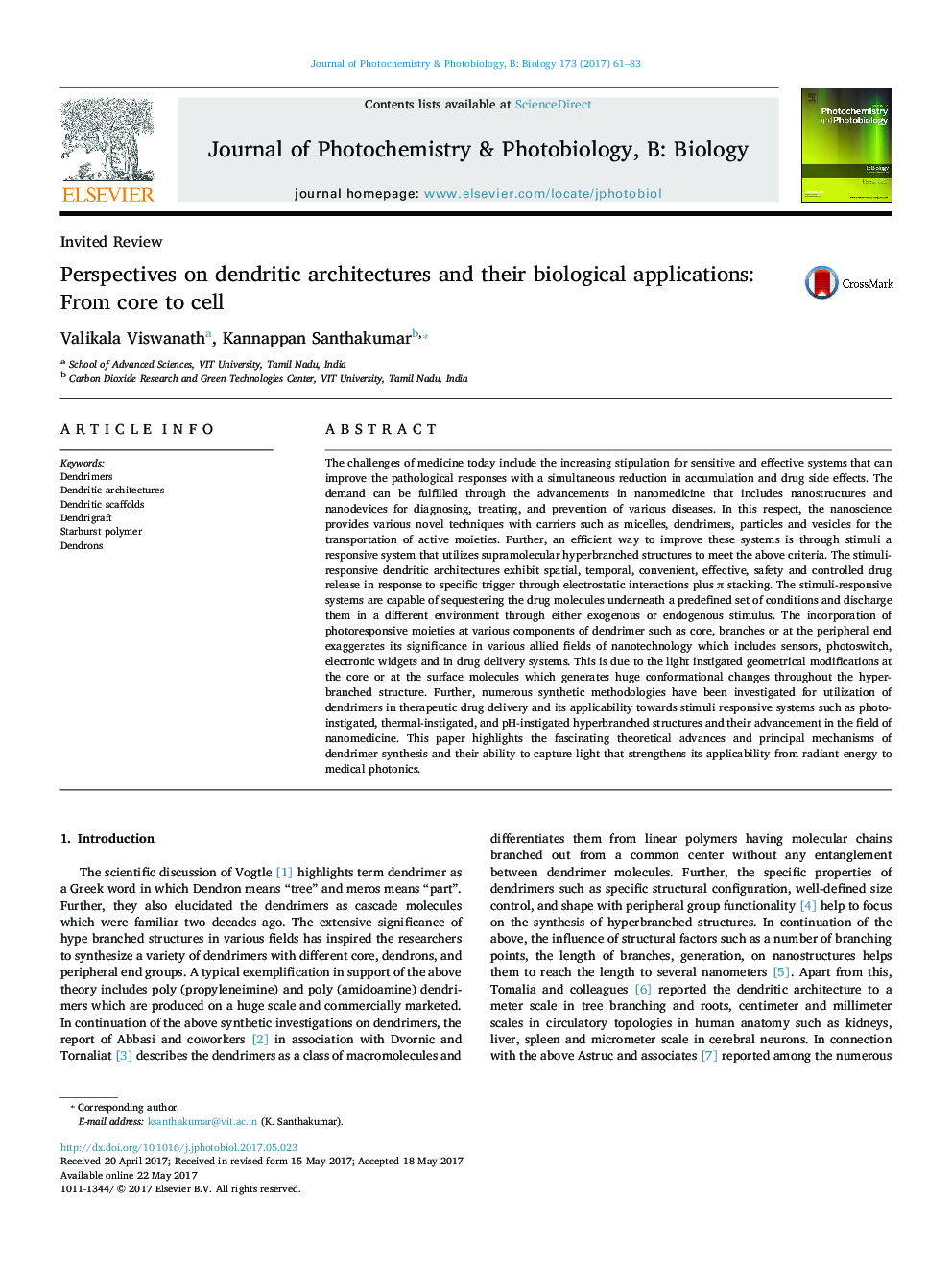| کد مقاله | کد نشریه | سال انتشار | مقاله انگلیسی | نسخه تمام متن |
|---|---|---|---|---|
| 4754366 | 1418060 | 2017 | 23 صفحه PDF | دانلود رایگان |
- Dendrimers are the synthetic hyperbranched structures with sprawling tree-like structure.
- Dendrimers consist of a central core, generations, outer shell and a multifunctional surface end groups.
- A dendritic core is referred to as generation zero or G0.
- Dendrimers can be synthesized using divergent, convergent, double exponential and double stage convergent growth techniques.
- Bioavailability of a dendrimer can be improved by PEGylation.
The challenges of medicine today include the increasing stipulation for sensitive and effective systems that can improve the pathological responses with a simultaneous reduction in accumulation and drug side effects. The demand can be fulfilled through the advancements in nanomedicine that includes nanostructures and nanodevices for diagnosing, treating, and prevention of various diseases. In this respect, the nanoscience provides various novel techniques with carriers such as micelles, dendrimers, particles and vesicles for the transportation of active moieties. Further, an efficient way to improve these systems is through stimuli a responsive system that utilizes supramolecular hyperbranched structures to meet the above criteria. The stimuli-responsive dendritic architectures exhibit spatial, temporal, convenient, effective, safety and controlled drug release in response to specific trigger through electrostatic interactions plus Ï stacking. The stimuli-responsive systems are capable of sequestering the drug molecules underneath a predefined set of conditions and discharge them in a different environment through either exogenous or endogenous stimulus. The incorporation of photoresponsive moieties at various components of dendrimer such as core, branches or at the peripheral end exaggerates its significance in various allied fields of nanotechnology which includes sensors, photoswitch, electronic widgets and in drug delivery systems. This is due to the light instigated geometrical modifications at the core or at the surface molecules which generates huge conformational changes throughout the hyperbranched structure. Further, numerous synthetic methodologies have been investigated for utilization of dendrimers in therapeutic drug delivery and its applicability towards stimuli responsive systems such as photo-instigated, thermal-instigated, and pH-instigated hyperbranched structures and their advancement in the field of nanomedicine. This paper highlights the fascinating theoretical advances and principal mechanisms of dendrimer synthesis and their ability to capture light that strengthens its applicability from radiant energy to medical photonics.
133
Journal: Journal of Photochemistry and Photobiology B: Biology - Volume 173, August 2017, Pages 61-83
